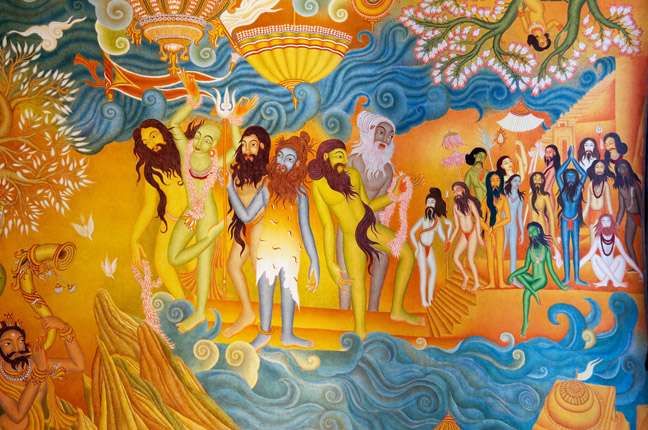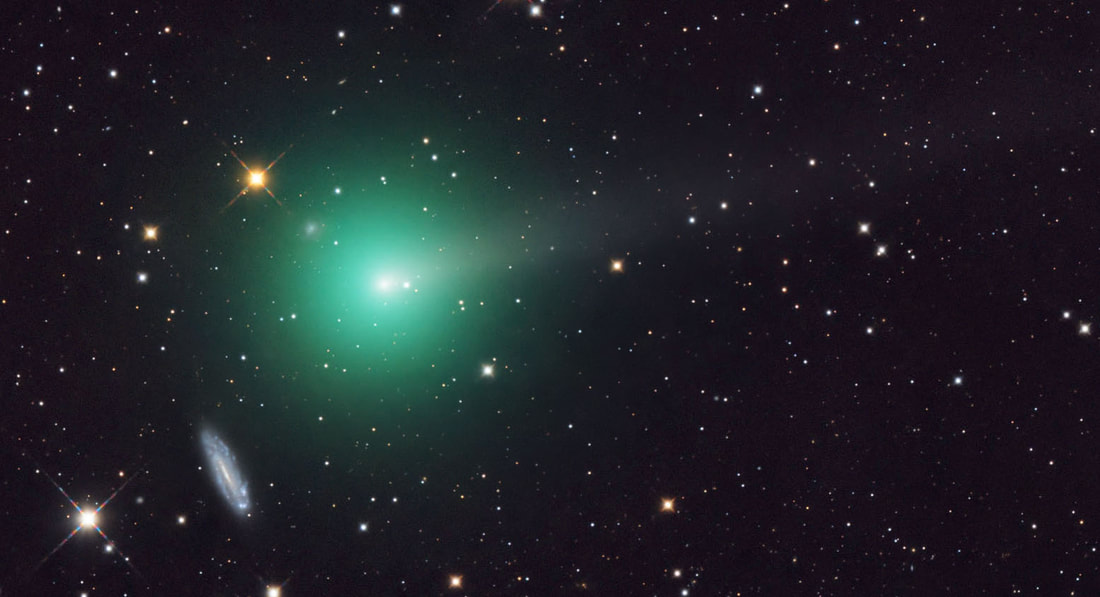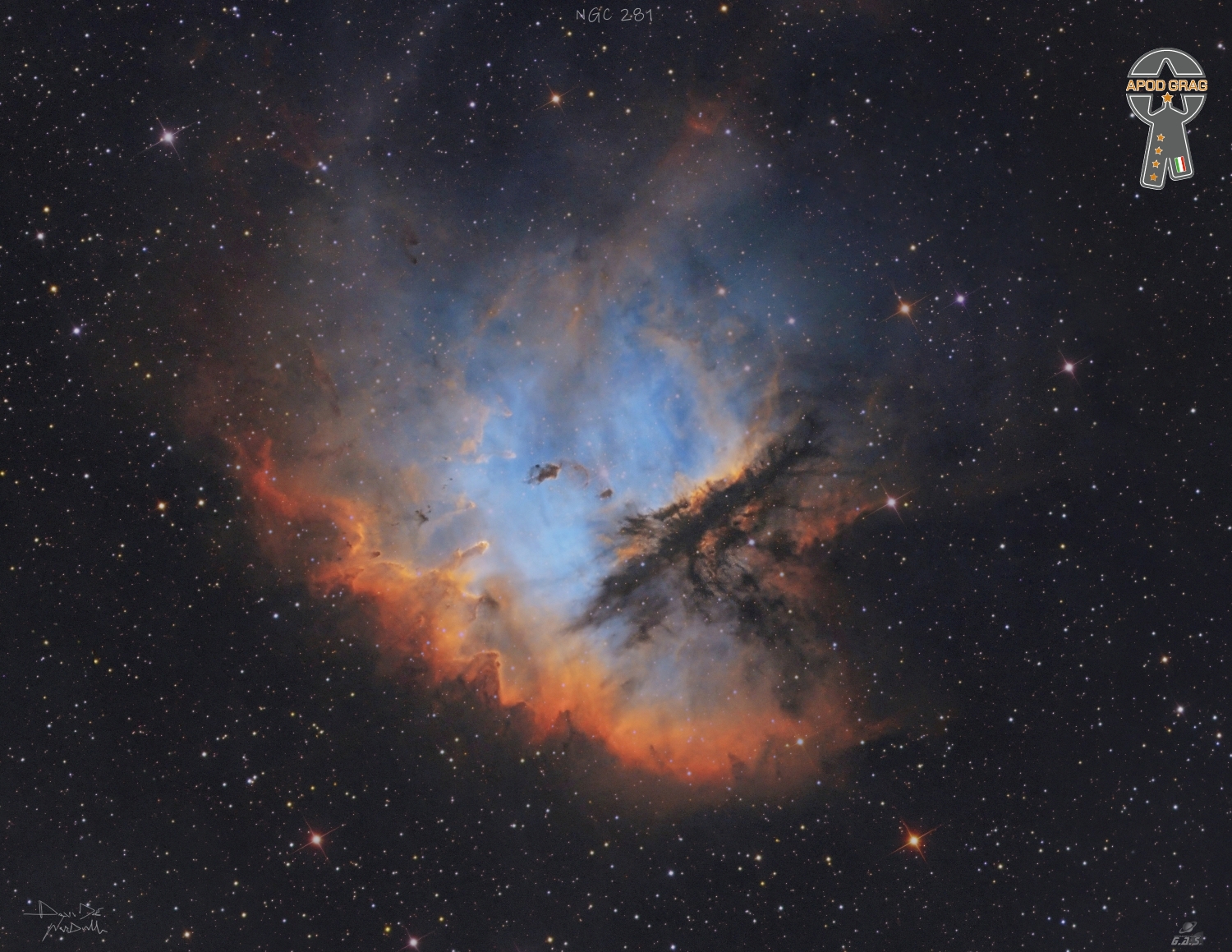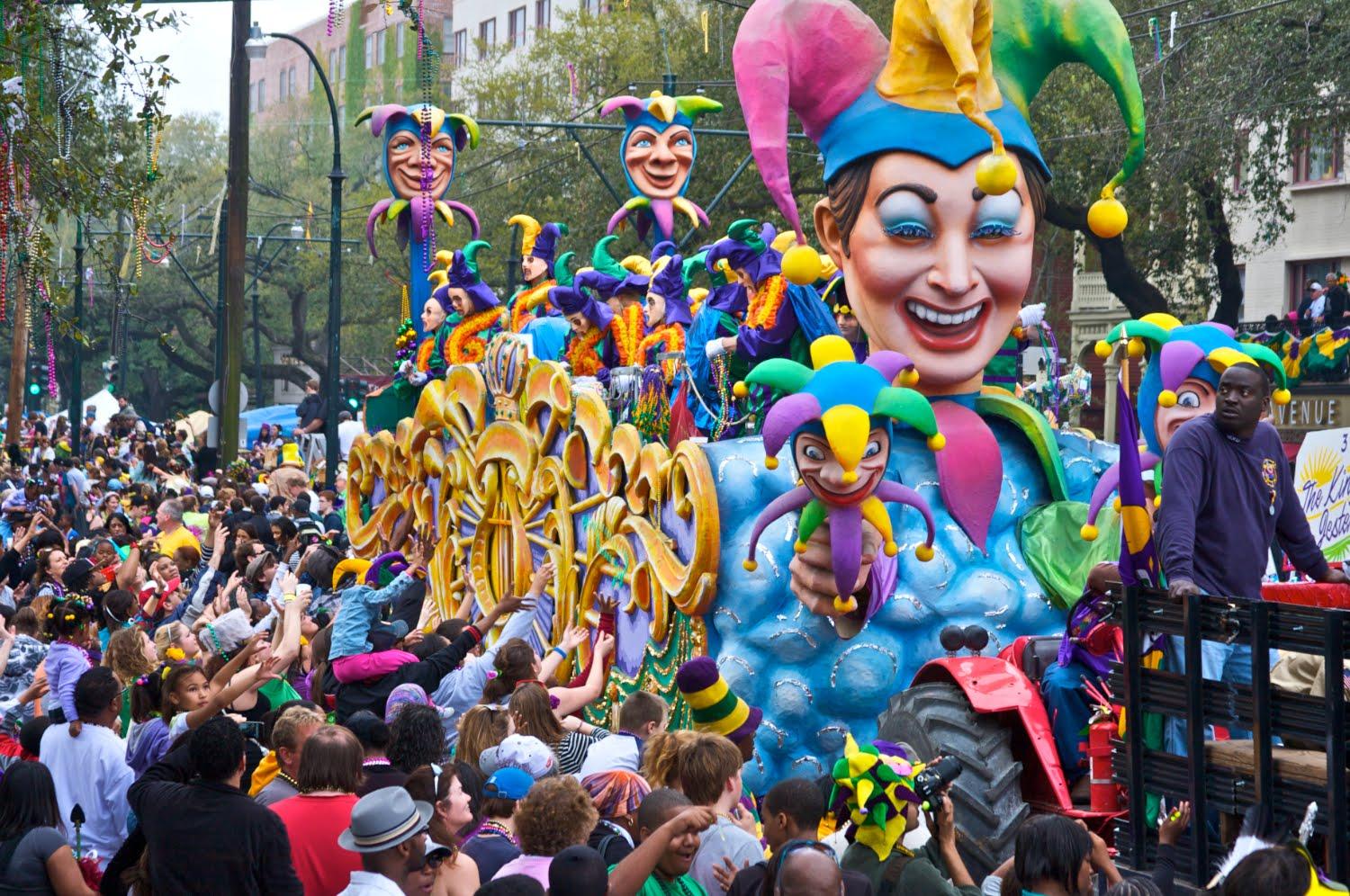Blog

62P/Tsuchinshan, also known as Tsuchinshan 1, is a periodic comet discovered on 1965 January 1 at Purple Mountain Observatory, Nanking. It will next come to perihelion on 25 December 2023 at around apparent magnitude 8, and will be 0.53 AU (79 million km) from Earth and 110 degrees from the Sun.
During the 2004 perihelion passage the comet brightened to about apparent magnitude11. The comet was not observed during the 2011 unfavorable apparition since the perihelion passage occurred when the comet was on the far side of the Sun. During the 2023 apparition it brightened to 8th magnitude.

more...
Jamesetta Hawkins (January 25, 1938 – January 20, 2012), known professionally as Etta James, was an American singer who performed in various genres, including gospel, blues, jazz, R&B, rock and roll, and soul. Starting her career in 1954, she gained fame with hits such as “The Wallflower“, “At Last“, “Tell Mama“, “Something’s Got a Hold on Me“, and “I’d Rather Go Blind“. She faced a number of personal problems, including heroin addiction, severe physical abuse, and incarceration, before making a musical comeback in the late 1980s with the album Seven Year Itch.
James’s deep and earthy voice bridged the gap between rhythm and blues and rock and roll. She won three Grammy Awards for her albums (2005 – Best Traditional Blues Album for Blues to the Bone; 2004 – Best Contemporary Blues Album for Let’s Roll; and 1995 – Best Jazz Vocal Performance, Female for Mystery Lady: Songs of Billie Holiday) and 17 Blues Music Awards. She was inducted into the Rock and Roll Hall of Fame in 1993, the Grammy Hall of Fame in 1999, and the Blues Hall of Fame in 2001. She also received a Grammy lifetime achievement award in 2003. Rolling Stone magazine ranked James number 22 on its list of the 100 Greatest Singers of All Time; she was also ranked number 62 on Rolling Stone‘s list of the 100 Greatest Artists of All Time. Billboard‘s 2015 list of “The 35 Greatest R&B Artists Of All Time” also included James, whose “gutsy, take-no-prisoner vocals colorfully interpreted everything from blues and R&B/soul to rock n’roll, jazz and gospel.”
The Rock and Roll Hall of Fame called hers “one of the greatest voices of her century” and says she is “forever the matriarch of blues.”
James frequently performed in Nashville’s famed R&B clubs on the so-called “Chitlin’ Circuit” in the 1940s, 1950s, and 1960s.
more...Benny Golson (born January 25, 1929) is an American bebop/hard bop jazz tenor saxophonist, composer, and arranger. He came to prominence with the big bands of Lionel Hampton and Dizzy Gillespie, more as a writer than a performer, before launching his solo career. Golson is known for co-founding and co-leading The Jazztet with trumpeter Art Farmer in 1959. From the late 1960s through the 1970s Golson was in demand as an arranger for film and television and thus was less active as a performer, but he and Farmer re-formed the Jazztet in 1982. Many of Golson’s compositions have become jazz standards including “I Remember Clifford“, “Blues March“, “Stablemates“, “Whisper Not“, “Along Came Betty”, and “Killer Joe”. He is regarded as “one of the most significant contributors” to the development of hard bop jazz, and was a recipient of a Grammy Trustees Award in 2021.
more...
Antônio Carlos Brasileiro de Almeida Jobim (25 January 1927 – 8 December 1994), also known as Tom Jobim , was a Brazilian composer, pianist, guitarist, songwriter, arranger, and singer. Considered one of the great exponents of Brazilian music, Jobim internationalized bossa nova and, with the help of important American artists, merged it with jazz in the 1960s to create a new sound, with popular success. As a result, he is sometimes known as the “father of bossa nova”.
Jobim was a primary force behind the creation of the bossa nova style, and his songs have been performed by many singers and instrumentalists internationally since the early 1960s.
In 1965, the album Getz/Gilberto was the first jazz record to win the Grammy Award for Album of the Year. It also won Best Jazz Instrumental Album – Individual or Group and Best Engineered Album, Non-Classical. The album’s single “Garota de Ipanema (The Girl from Ipanema)“, composed by Jobim, has become one of the most recorded songs of all time, and the album won the Record of the Year. Jobim composed many songs that are now included in jazz and pop standard repertoires. “Garota de Ipanema” has been recorded over 240 times by other artists. His 1967 album with Frank Sinatra, Francis Albert Sinatra & Antônio Carlos Jobim, was nominated for Album of the Year in 1968.
more...John Adam Estes (January 25, 1899 or 1900 – June 5, 1977), performing as Sleepy John Estes, was an American blues guitarist, songwriter and vocalist. His music influenced such artists as The Beatles, Bob Dylan and Led Zeppelin.
Estes was born in Ripley, Tennessee, either in 1899 (the date on his gravestone) or 1900 (the date on his World War I draft card). In 1915, his father, a sharecropper who played guitar, moved the family to Brownsville, Tennessee. Not long after, Estes lost the sight in his right eye when a friend threw a rock at him. At the age of 19, while working as a field hand, he began to perform professionally, mostly at parties and picnics, with the accompaniment of Hammie Nixon, a harmonica player, and James “Yank” Rachell, a guitarist and mandolin player. Estes continued to work on and off with both musicians for more than fifty years. He also performed in medicine shows with Willie Newbern.
more...NGC 281, IC 11 or Sh2-184 is a bright emission nebula and part of an H II region in the northern constellation of Cassiopeia and is part of the Milky Way‘s Perseus Spiral Arm. This 20×30 arcmin sized nebulosity is also associated with open cluster IC 1590, several Bok globules and the multiple star, B 1. It collectively forms Sh2-184, spanning over a larger area of 40 arcmin. A recent distance from radio parallaxes of water masers at 22 GHz made during 2014 is estimated it lies 2.82±0.20 kpc. (9200 ly.) from us. Colloquially, NGC 281 is also known as the Pacman Nebula for its resemblance to the video game character.

Aaron Joseph Neville (born January 24, 1941) is an American R&B and soul singer. He has had four platinum albums and four Top 10 hits in the United States, including three that reached number one on Billboard‘s Adult Contemporary chart. “Tell It Like It Is”, from 1966, also reached the top position on the Soul chart for five weeks.
He has also recorded with his brothers Art, Charles, and Cyril as the Neville Brothers and is the father of singer/keyboards player Ivan Neville.
The first of his singles that was given airplay outside of New Orleans was “Over You” (Minit, 1960). Neville’s first major hit single was “Tell It Like It Is“, released on a small New Orleans label, Par-Lo, co-owned by local musician/arranger George Davis, a friend from school, and band-leader Lee Diamond. The song topped Billboard‘s R&B chart for five weeks in 1967 and also reached No. 2 on the Billboard Hot 100(behind “I’m a Believer” by the Monkees). It sold over one million copies, and was awarded a gold disc. It was not the label’s only release, as some sources claim. At least five other Par-Lo singles, three of them by Neville himself, are known to exist.
more...Joe Albany (born Joseph Albani; January 24, 1924 – January 12, 1988) was an American modern jazz pianist who played bebop with Charlie Parker as well as being a leader on his own recordings.
Born in Atlantic City, New Jersey, Albany studied piano as a child and, by 1943, was working on the West Coast in Benny Carter‘s orchestra. In 1946, Lester Young recorded with Albany as his pianist, for Aladdin Records. Also that year, he played at least once with Parker and then 20-year-old Miles Davis. He continued for a few years afterward, and in 1957 recorded an album for Riverside with an unusual trio line-up with saxophonist Warne Marsh and Bob Whitlock on bass, omitting a drummer.
more...James Robert Forrest Jr. (January 24, 1920 – August 26, 1980) was an American jazz musician, who played tenor saxophone throughout his career. Forrest is known for his first solo recording of “Night Train“. It reached No. 1 on the Billboard R&B chart in March 1952, and stayed at the top for seven weeks. “Hey Mrs. Jones” (No. 3 R&B) and “Bolo Blues” were his other hits. All were made for United Records, for which he recorded between 1951 and 1953; he recorded frequently as both a sideman and a bandleader.
Born in St. Louis, Missouri, United States, Forrest played alongside Fate Marable as a young man. He was with Jay McShann in 1940-42 and with Andy Kirk from 1942 until 1948 when he joined Duke Ellington.
more...This image contains the Pleiades star cluster, Barnard’s Loop, Horsehead Nebula, Orion Nebula, Rosette Nebula, Cone Nebula, Rigel, Jellyfish Nebula, Monkey Head Nebula, Flaming Star Nebula, Tadpole Nebula, Aldebaran, Simeis 147, Seagull Nebula and the California Nebula. To find their real locations, here is an annotated image version. The reason this task might be difficult is similar to the reason it is initially hard to identify familiar constellations in a very dark sky: the tapestry of our night sky has an extremely deep hidden complexity. The featured composite reveals some of this complexity in a mosaic of 28 images taken over 800 hours from dark skies over Arizona, USA.

Gary Burton (born January 23, 1943) is an American jazz vibraphonist, composer, and educator. Burton developed a pianistic style of four-mallet technique as an alternative to the prevailing two-mallet technique. This approach caused him to be heralded as an innovator, and his sound and technique are widely imitated. He is also known for pioneering fusion jazz and popularizing the duet format in jazz, as well as being a major figure in music education from his 30 years teaching at the Berklee College of Music.
Burton was born in Anderson, Indiana, United States. Beginning music at six years old, he mostly taught himself to play marimba and vibraphone. He began studying piano at age sixteen while finishing high school at Princeton Community High School in Princeton, Indiana (1956–60). He has cited jazz pianist Bill Evans as the inspiration for his approach to the vibraphone.
more...Curtis Counce (January 23, 1926 – July 31, 1963) was an American hard bop and West Coast jazzdouble bassist. Counce was born in Kansas City, Missouri and moved to California in 1945. He began recording in 1946 with Lester Young, and in the 1950s in Los Angeles with musicians such as Shorty Rogers, Stan Kenton,Shelly Manne, Lyle Murphy, Teddy Charles, and Clifford Brown. Counce formed his quintet in 1956 featuring tenor saxophonist Harold Land, trumpeter Jack Sheldon, pianist Carl Perkins and drummer Frank Butler. Elmo Hope replaced Perkins after his death at age 29 in 1958.Gerald Wilson replaced Sheldon on some recordings. The four albums originally released on Contemporary Records were reissued in 2006 on a double CD by Gambit Spain. Counce died in Los Angeles, California, of a heart attack. He was survived by his wife, Mildred Counce, his daughter, Celeste Counce, and a son. Counce’s son, born April 10, 1961, was placed for adoption by his biological mother. Curtis knew of his son, but due to his life circumstances, Counce could not be a part of his life. Curtis’s son died on January 23, 2022.
more...More Posts
- Flamenco Fridays Alegrías con Rancapino Chico
- Daily Roots Phillip Fullwood
- Happy Birthday Mario
- Cosmos M8
- Víctor Jara
- Kenny Kirkland
- John Gilmore
- Koko Taylor
- World Music Ethiocolor
- Daily Roots Niney the Observer
- National Daughters Day 2023 Maya LaBriola
- Cosmos IC 4592
- Earring George Mayweather
- Red Rodney
- Bud Powell
- World Fusion Rhiannon Giddens Yo-Yo Ma
- Daily Roots The Scientist
- Cosmos Arp 142
- Gary Bartz
- Vic Juris
